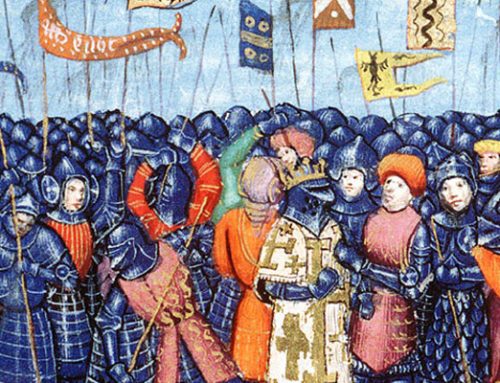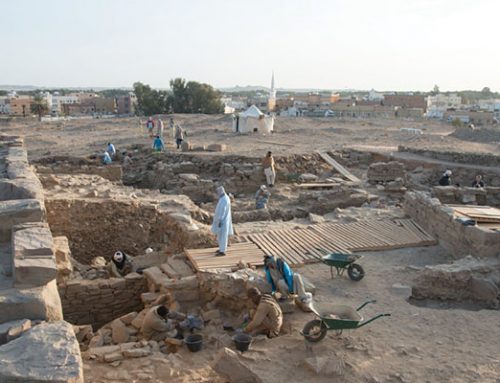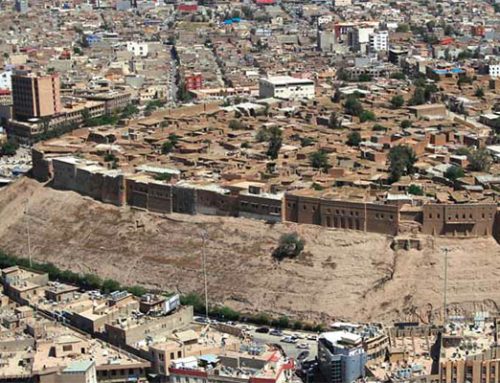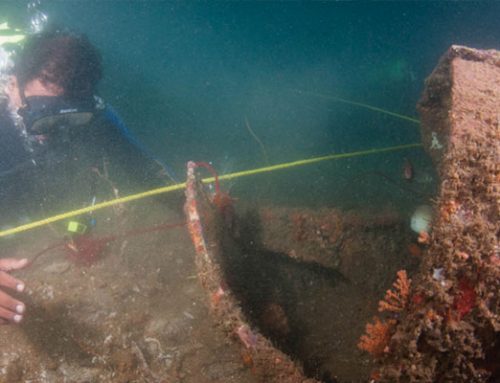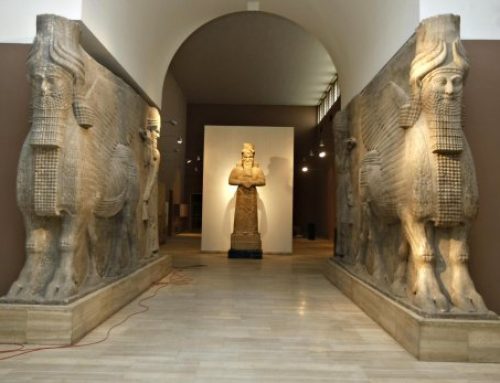Ideal conditions within an ancient cave system are revealing a rich history that reaches back to a time before humans settled the island and extends to the present day
Some six million years ago, in the middle of the North Pacific Ocean, volcanic activity bubbling up from deep beneath the Earth’s crust formed Kauai, the most ancient of Hawaii’s major islands. Over time, volcanoes dotting the island spewed magma that cooled and turned to igneous rock, forming steep mountains. Rainwater flowed down the mountains, and, as that runoff reached the Mahaulepu Valley on the island’s southeast coast, it encountered fossilized sand dunes, where, through a process called dissolution, a network of caves was formed.
For more than 100,000 years, groundwater seeped in and eroded the limestone. Some 7,000 years ago, the sea encroached and a large portion of the ceiling of one of these caves collapsed, leaving behind a vast oval, mostly open to the sky and filled with brackish water that didn’t dry up until the middle of the twentieth century. It also created what would turn out to be a unique and fortuitous set of conditions that preserved a long, dramatic story of geological change and biological invasions, and of the waves of humans that successively altered the island in radical ways. Paleoecologists and archaeologists working there, surrounded by the high, ancient limestone walls, are beginning to read that record.
 Wedged in a crease of hills just above a long white-sand beach favored by sailboarders, the sinkhole sits in a setting so picturesque that Johnny Depp’s Captain Jack Sparrow leaped off the lip of one of its high cliffs in the recent Pirates of the Caribbean movie On Stranger Tides . There, everything from a 352 ,000-year-old lava flow to a Sty rofoam cup washed in during a recent hurricane has been preserved. For the past quarter century, husband-and-wife paleoecologists David Burney and Lida Pigott Burney, along with dozens of colleagues and volunteers, have been digging down through the black mud that fills the sinkhole. There they have uncovered millions of fossils—in fact, the site, referred to as Makauwahi Cave, may be the richest fossil site in the entire Pacific region. The upper levels contain thousands of artifacts, ranging from animal bones to stone tools and carved wood, all of which were washed, blown, or thrown into the cave. But despite the richness of the site in terms of the evidence, Burney doesn’t need expensive drilling equipment or a massive dig project to plumb the site’s secrets. “It’s the poor man’s time machine,” he says. Small trowels, a very good water pump to keep groundwater under control, and wood-framed screens, along with a great deal of tenacity, are all that’s required.
Wedged in a crease of hills just above a long white-sand beach favored by sailboarders, the sinkhole sits in a setting so picturesque that Johnny Depp’s Captain Jack Sparrow leaped off the lip of one of its high cliffs in the recent Pirates of the Caribbean movie On Stranger Tides . There, everything from a 352 ,000-year-old lava flow to a Sty rofoam cup washed in during a recent hurricane has been preserved. For the past quarter century, husband-and-wife paleoecologists David Burney and Lida Pigott Burney, along with dozens of colleagues and volunteers, have been digging down through the black mud that fills the sinkhole. There they have uncovered millions of fossils—in fact, the site, referred to as Makauwahi Cave, may be the richest fossil site in the entire Pacific region. The upper levels contain thousands of artifacts, ranging from animal bones to stone tools and carved wood, all of which were washed, blown, or thrown into the cave. But despite the richness of the site in terms of the evidence, Burney doesn’t need expensive drilling equipment or a massive dig project to plumb the site’s secrets. “It’s the poor man’s time machine,” he says. Small trowels, a very good water pump to keep groundwater under control, and wood-framed screens, along with a great deal of tenacity, are all that’s required.
On a recent winter day, Burney is shin-deep in the tar-black ooze at the bottom of one of the excavation pits. He typically locates them at the periphery of the sinkhole, against the cave’s walls, where the stratigraphy is clearer. He motions to me to clamber down a 20-foot aluminum ladder and gives me a history lesson as I descend. After the first few rungs, I leave behind the period after Captain James Cook landed on Kauai in January 1778 , the first European known to have visited Hawaii. Plastic, glass, and metal artifacts abruptly cease and are replaced by giant boulders, gravel, and sand in the level below, dated to about four or five centuries ago, unmistakable signs of an enormous tsunami which Burney and his colleagues believe originated from a massive earthquake in the eastern Aleutian Islands. This event, no doubt a catastrophe for the people living on the Kauai coast, deposited a great deal of debris and sealed off the prehistoric layers deposited in the cave from those of the later era of Western contact, leaving the material below undisturbed and uncontaminated.
 Natives and tourists had long known about Makauwahi Cave, but it was Burney who, in August 1992 , first grasped its significance for understanding Hawaii’s long and varied history, when he, Lida, and researchers Storrs Olson and Helen James from the Smithsonian Institution stumbled on the site while on vacation. At the time, the Burneys were at New York’s Fordham University and had a keen interest in ecological history and paleontology. One afternoon, while walking on a nearby beach, Burney spotted fresh footprints that appeared to lead into the brush. Curious but cautious, he followed the prints to a small hole at the foot of a cliff, just big enough to crawl through. Inside, he found himself within a giant oval bowl, but he couldn’t see much else through the dense growth and the afternoon’s lengthening shadows.
Natives and tourists had long known about Makauwahi Cave, but it was Burney who, in August 1992 , first grasped its significance for understanding Hawaii’s long and varied history, when he, Lida, and researchers Storrs Olson and Helen James from the Smithsonian Institution stumbled on the site while on vacation. At the time, the Burneys were at New York’s Fordham University and had a keen interest in ecological history and paleontology. One afternoon, while walking on a nearby beach, Burney spotted fresh footprints that appeared to lead into the brush. Curious but cautious, he followed the prints to a small hole at the foot of a cliff, just big enough to crawl through. Inside, he found himself within a giant oval bowl, but he couldn’t see much else through the dense growth and the afternoon’s lengthening shadows.
The next morning, before the sun had reached the interior, the two couples were back with a bucket augur, a small hand-powered drill that can pull material up from below ground, making only a small puncture in the surface, not greatly disturbing the site. The first bore went down 10 feet, and Burney found three species of extinct land snails, important indicators of ancient environmental conditions. In the second sample was a small bird skull. “If you got that much good stuff by drilling two small holes, then I couldn’t imagine what was waiting,” he says. “I’ve spent much of my life looking for two things—lakes and caves that have fossils in them,” says the peripatetic scientist, who had flitted in this pursuit from the North Carolina sounds to the Serengeti plains to the jungles of Madagascar before moving to Kauai to devote himself to studying Makauwahi Cave. “If you can find a lake inside a cave, it’s more than twice as good because you get the benefit of both types of fossil-forming environments.” At Makauwahi, the conditions are remarkable. The alkaline limestone and the acidic groundwater cancel each other out and create the perfect neutral pH. “This is the Goldilocks zone—just right,” he says. “Everything in here is preserved. It’s like pages in a diary. And this process has been operating for thousands of years.” An acidic environment would have destroyed bones, while an alkaline environment would have destroyed plant fossils. But here, not just animal fossils, but also shells, seeds, leaves, and wood, as well as billions of microscopic algae, pollen, and spores are embedded in the layers that extend as far as 33 feet deep to the sinkhole’s floor.
Since they settled there permanently to devote themselves to studying the cave full-time 10 years ago, the Burneys, along with their team, have been working almost year-round to clear the thick tangle of foliage inside the sinkhole and dig small but deep trenches. Each bucket of mud must be hauled by hand up a ladder while a loud water pump keeps the hole from filling up. Once up top, the mud is washed through mesh screens using garden hoses, and the remains are collected for cataloguing and analysis. In the topmost layers, which go down a few feet, the team retrieved eight-track tapes and Polaroid film packs, a bottle that might have contained the opiate laudanum, perhaps used by Chinese workers who snuck into the cave a century ago, and a coin dated to 1895. Below that, the team found a piece of glass and an iron nail, possibly bartered from the crew of a passing clipper ship on its way to or returning from China, probably in the mid-nineteenth century.
 Artifacts of the more recent past found in Makauwahi Cave are abundant. But the finds that are proving to be the most exciting are those that reveal the impact the first people to settle in Hawaii had on its ancient environment. Hawaii is one of the last places on Earth to have been settled by humans. Thousands of years after people had made their homes on the tip of South America, the heights of the Tibetan plateau, and even the icy edges of Greenland, no human had yet set foot on this volcanic archipelago. When people pulled double-hulled canoes onto Hawaiian shores for the first time, it marked one of our species’ greatest triumphs of exploration. Yet, until recently, archaeologists have been unsure how and when this feat took place.
Artifacts of the more recent past found in Makauwahi Cave are abundant. But the finds that are proving to be the most exciting are those that reveal the impact the first people to settle in Hawaii had on its ancient environment. Hawaii is one of the last places on Earth to have been settled by humans. Thousands of years after people had made their homes on the tip of South America, the heights of the Tibetan plateau, and even the icy edges of Greenland, no human had yet set foot on this volcanic archipelago. When people pulled double-hulled canoes onto Hawaiian shores for the first time, it marked one of our species’ greatest triumphs of exploration. Yet, until recently, archaeologists have been unsure how and when this feat took place.
The ancestors of today’s Polynesians, who settled most of the Pacific, including Hawaii, were part of what is called the Lapita culture. They fanned out from East Asia more than 3,000 years ago, but questions about their origins and route remain. Archaeologists have found hundreds of sites across the western Pacific littered with artifacts such as stone axes and organic remains that suggest the island-hopping seafarers traveled great distances with goods, plants, and animals from the large islands along the coast of China and Southeast Asia. This collection of materials, dubbed the Lapita package, made colonization possible. “But we don’t know where the package comes together,” says Alan Cooper, an archaeologist at the University of Adelaide in Australia.
By about 1000 b.c., these people had moved east as far as Samoa and can be identified as early Polynesians. The vast distances required to reach the islands beyond, such as the Society Islands—another 1,500 miles across open ocean—halted further successful migration for nearly 2,000 more years. Then the Polynesians were suddenly on the move again, though it’s not clear why, into the central and eastern Pacific, an area as big as North America. They eventually landed on the Hawaiian islands, possibly first on Kauai, not far from Makauwahi Cave.
The timing of these voyages has been hotly debated, largely because archaeological evidence is difficult to recover under the destructive conditions created by the warm and wet climate that dominates the scattered islands of the Pacific, and because of the prevalence of acidic volcanic soils. These two factors wreak havoc on organic material such as the wood, plant remains, and animal bones that can provide firm dates through radiocarbon dating. “There aren’t enough bones,” explains Cooper, “because the preservation is a mess. The Pacific is a hard place to work.” And the ancient seafarers didn’t leave behind texts or inscriptions. But, unlike at many other sites, the conditions inside Makauwahi Cave have preserved a great deal of evidence. “It’s a really fantastic snapshot of the environment just before and after humans arrive,” says Terry Hunt, an archaeologist at the University of Oregon. “I can’t think of a single site that has yielded as much information about Polynesia in this period.”
 Some of the most prized discoveries in the cave are found below the 400 -year-old tsunami layer that Burney believes was deposited in less than an hour. They are the tiny and fragile remnants of ancient fowl. “This is where the chicken bones are,” he says when I am halfway down the ladder, pointing at a dark layer of earth several feet below the tsunami layer. “We can be pretty sure they are not mixed with modern stuff. There is no KFC chicken in here at all.”
Some of the most prized discoveries in the cave are found below the 400 -year-old tsunami layer that Burney believes was deposited in less than an hour. They are the tiny and fragile remnants of ancient fowl. “This is where the chicken bones are,” he says when I am halfway down the ladder, pointing at a dark layer of earth several feet below the tsunami layer. “We can be pretty sure they are not mixed with modern stuff. There is no KFC chicken in here at all.”
When Polynesians set out for new places, chickens were an essential part of the settlement package, providing not just meat and eggs and entertainment— cockfighting is still popular across the region—but also bones that could be made into tattooing or sewing needles or musical instruments. Polynesians sometimes left dogs or pigs behind, but they invariably carried chickens to their new destinations. Since domesticated chickens are not native to the Pacific Islands, the presence of chicken bones is a clear marker of human activity, and following the movement of chickens provides a handy way to track the spread of settlement across Polynesia. Realizing this, Burney bagged the chicken remains he discovered and sent them to Cooper’s lab. When compared with the DNA from other samples around Polynesia, researchers found that a distinct set of genes characterized the ancient chickens. The resulting DNA map reveals two distinct waves of exploration, one moving northeast toward Micronesia, and the other moving east to Samoa and Hawaii. Rats traveled extensively with Polynesians as well, but they could hop boats back and forth to different islands, making them difficult to track, says Cooper. Pigs and dogs, apparently, did not make it to some outposts, such as Easter Island.
The mud of Makauwahi Cave has also preserved the residue of charcoal that blew into the cave and settled into the muck. Radiocarbon dating of the samples suggests that charcoal is a rare occurrence until a.d . 1200 . Its sudden appearance is another marker for human occupation and activity as people began to burn off foliage to plant taro and other staples. Cores taken from ancient stone-lined fish ponds on the island produced charcoal that provides comparable dates, clear signs and possible confirmation that humans arrived a good deal later—as much as 800 years later—than many historians had thought.
In the same levels as the chicken bones, the Burneys discovered large quantities of fishhooks made from bone and mother-of-pearl and the shells of 16 different kinds of mollusks. These artifacts are evidence of the earliest stages of ancient Hawaiian culture.
Burning was only one way in which the new settlers transformed Kauai’s landscape. Along with the rats, insects, such as ants, stowed away on their canoes. The combination of human activity and changes wrought by the animals and plants they brought makes it difficult to imagine the island’s environment as it existed before people arrived, but the cave is providing proof that it was once radically different. Standing almost at the bottom of the ladder, Burney says that bones, seeds, and other organic material embedded in the mud around us are below the level of the Polynesians’ appearance on the island, predating their arrival.
The Burneys’ work suggests that, in contrast to the weedy fields where sugarcane was long cultivated, the area around the sinkhole was wooded, dominated by a species of small palm. The trade winds blew birds to the island chain, and though these ancient Hawaiian birds had no predators, being blown back to sea meant certain death. Wings, therefore, constituted a risk for larger birds, and thus flightless species arose. More than 50 species of finches hopped through the forests, each adapted to a tiny ecological niche. Two sorts of small birds called rails crept along the ground looking for the eggs of other species to snag. The only mammals on the island before humans arrived were small bats. Avians filled the ecological niches that elsewhere were occupied by grazing animals such as wild sheep and cattle, which could not survive the long journey across the ocean. “The mallard duck gets here and suddenly grows 10 times as large, stops flying, develops a beak like a tortoise, and goes out and eats the vegetation,” Burney says, gesturing up through the hole. “It’s a laboratory of evolution.”
The island’s most fearsome predator was a type of long-legged owl that caught what flying birds there were in mid-air during the day—there were no nocturnal rodents to eat—and pierced their skulls with pincer claws. “You can tell by the holes in the skulls of the victims,” says Burney. By now we are standing at the bottom of one of the excavation trenches with cool muck rising halfway to our knees.
 Eventually we climb back up, passing the centuries as we go. When we emerge from the pit, Burney’s legs are caked in the black ooze and his black helmet is spotted with dried dirt. He ambles over to the volunteers sorting through the mud using garden hoses and rectangular boxes with one-sixteenth- inch mesh. “Don’t save every last little snail, but every bird bone and every seed we want to keep,” he says to one woman. “The biggest problem is that people try to screen too much at once,” he explains. “Just keep it to a double handful so you don’t miss anything.”
Eventually we climb back up, passing the centuries as we go. When we emerge from the pit, Burney’s legs are caked in the black ooze and his black helmet is spotted with dried dirt. He ambles over to the volunteers sorting through the mud using garden hoses and rectangular boxes with one-sixteenth- inch mesh. “Don’t save every last little snail, but every bird bone and every seed we want to keep,” he says to one woman. “The biggest problem is that people try to screen too much at once,” he explains. “Just keep it to a double handful so you don’t miss anything.”
Archaeologists have long suspected that the arrival of humans on Hawaii spelled doom for innumerable plant and animal species. Nearly four dozen bird species, many of them extinct, have been recovered from Makauwahi Cave, and other excavations, particularly along the coastal plains, confirm the rapid transformation of the environment once people got there. Though the original settlers likely were a small band of 100 people or so, based on genetic data, rats rapidly populated the islands, posing a deadly threat to the large flightless birds vulnerable to scurrying mammals. The rats also quickly ate the seeds of the native palms, while humans may have overexploited the trees for thatch, causing them to almost disappear from the island. Early engravings made by Europeans who began coming to Hawaii in the late 1700 s show the area around Makauwahi Cave to be virtually treeless by this point—coastal plains had been transformed by way of irrigation and ponds, and mass burning had driven the forest back to areas too steep to cultivate. By the time the Europeans arrived, 600 or so years after the islands’ first settlers, Hawaiians numbered perhaps 200 ,000 or more, and the landscape was a combination of field and forest with few signs of the strange birds that once dominated the chain. One of the surprising finds Burney and his colleague, Australian paleoentomologist Nick Porch of Deacon University, have made is that the accidental introduction of insects, particularly ants, may have devastated the native species of beetles, many of which were wingless and therefore defenseless against the invaders. “It was insect Armageddon,” Burney says. “When people come to a new land, there is always mass extinction.”
Although today only a few native species of plants and animals survive in the lowlands of Kauai, the Burneys are working hard to change this. The land that includes the cave complex is owned by the Grove Farm Company, but it is now managed by the nonprofit Makauwahi Cave Reserve, which the Burneys created. In combination with their archaeological work, they are trying to bring ancient Hawaii back to life, at least on a small scale. Inside the sinkhole, based on what they have found during more than two decades of excavation, they are slowly replacing plants brought by Europeans with both native Hawaiian and Polynesian species. In acres of plant restorations that Lida Pigott Burney has created outside the cave, she and a host of volunteers have planted examples of native plants the Burneys identified in the cave’s fossil record. These species had retreated into largely inaccessible areas, but can thrive in the lowlands if given a chance. The reserve is also home to a few acres of traditional taro and other early Polynesian crops, as well as native palms and indigenous flowering plants that have replaced what was a 200-year monoculture of sugarcane.
More than 20 ,000 visitors, including many students, come to Makauwahi Cave each year to rediscover Hawaii’s lost past. There they learn to plant traditional crops such as bananas and breadfruit, and they visit the Burneys’ fenced restoration containing not only newly cultivated native plants, but also a dozen and a half tortoises that mimic the feeding habits of the long-extinct grazing birds and keep invasive weeds at bay. For Burney, the effort is an innova tive way to use archaeological and paleontological data to restore native species to the landscape and revive ancient practices. “I’m just as much interested in the future as the past,” he says. As we part, Burney is off to feed his chickens before dusk.

